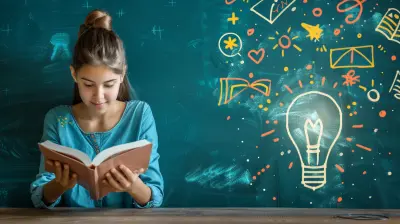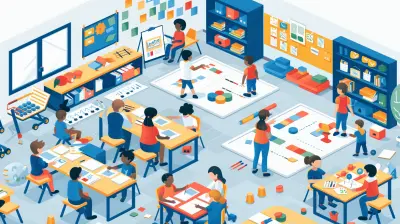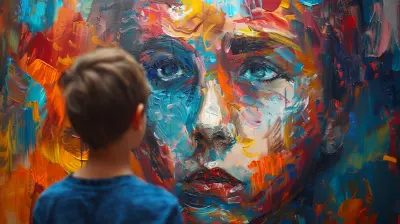From Scribbles to Masterpieces: Supporting Artistic Growth in Kids
21 June 2025
Have you ever watched a child pick up a crayon for the first time? There’s a kind of magic in the way their little hands move, unsure yet determined. The end result might look like a tornado collided with a rainbow, but to them—and often to us—it’s a masterpiece.
Art is one of the purest forms of self-expression, especially for children. But how do we nurture that spark of creativity? How do we support their artistic growth without turning it into something rigid or forced?
Let’s dive into the world of children’s art, from those early scribbles to the moment they proudly present you with a drawing they call “My Family in Space.” (Yes, that’s a real thing.)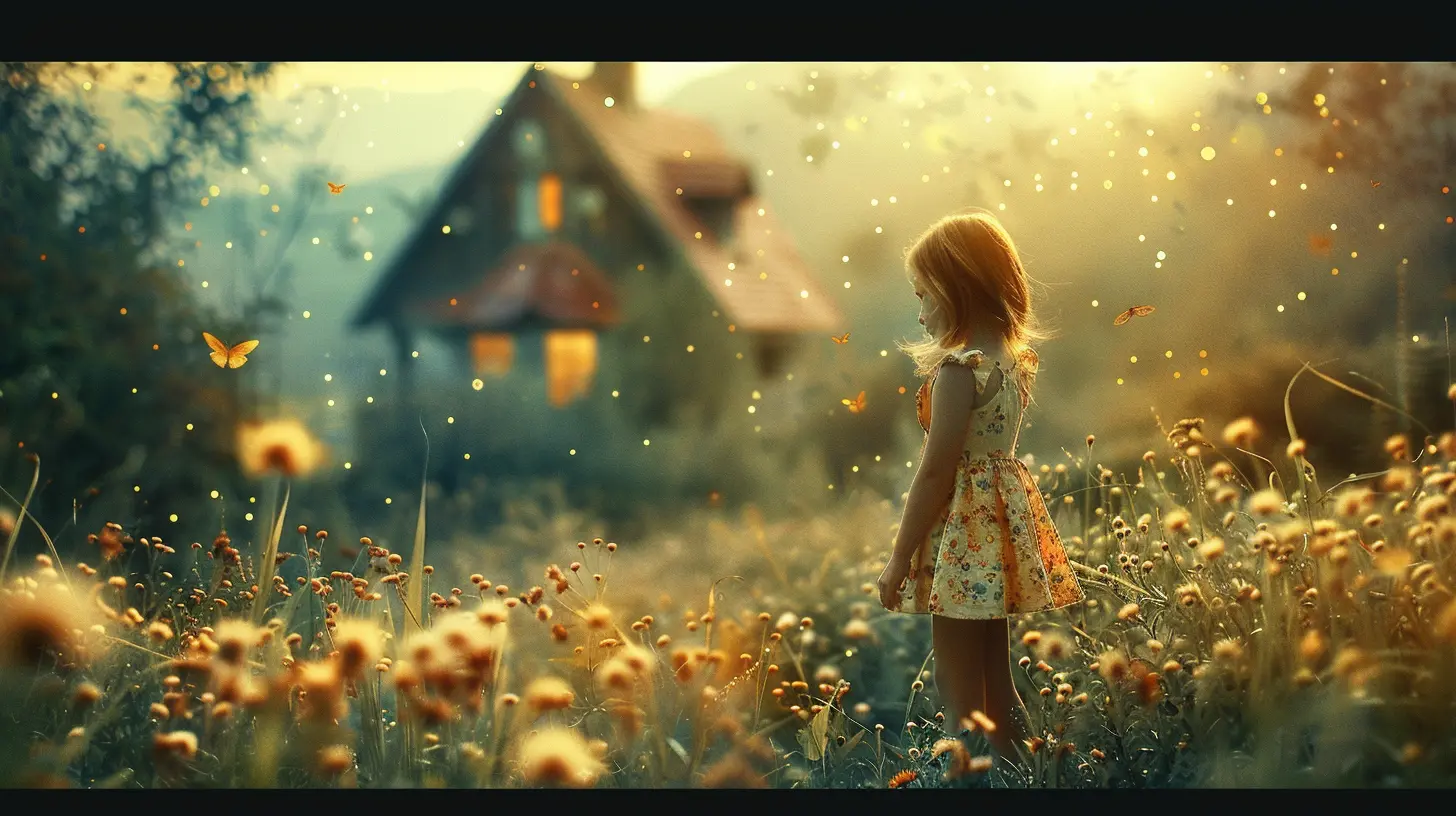
Why Artistic Expression Matters for Kids
Before we talk about how to support creative growth, let’s first understand why it matters. Art isn’t just about making pretty pictures—it’s much deeper than that.Art Encourages Emotional Expression
Kids don't always have the words to express how they feel. Art gives them another language—one filled with color, movement, and shapes. Whether it’s joy, sadness, excitement, or frustration, children can pour their feelings into their art.Think of it like a pressure valve. Kids can release what’s inside without having to explain it verbally. That’s powerful.
It Builds Confidence
When a child creates something and is praised for it, it boosts their self-esteem. Even a simple “I love your drawing!” tells them their voice matters.The more they create, the more confident they become in their abilities—not just as artists, but as thinkers and problem solvers.
Art Supports Cognitive and Motor Skill Development
Drawing, painting, and sculpting all involve using fine motor skills. Squeezing a glue bottle, holding a pencil, or cutting with scissors helps children strengthen their hand muscles and improve coordination.And let’s not forget cognitive skills. Every choice a child makes—“What color should I use here?” or “Should I make this line swirl or zigzag?”—is a small exercise in decision making and planning.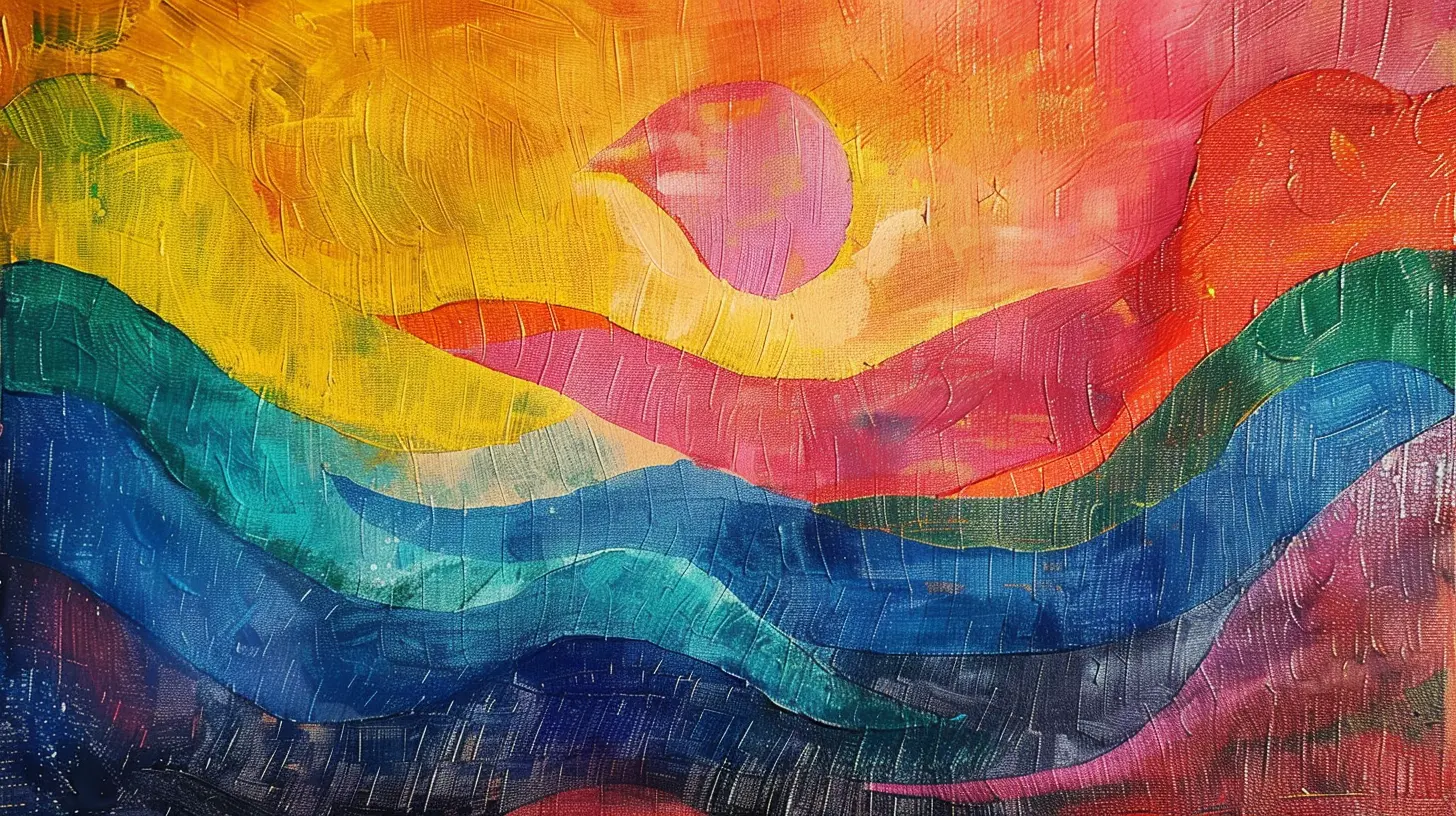
Understanding the Artistic Stages in Children
Just like reading and writing, artistic development follows a general progression. Understanding these stages helps us know how to best support kids at each point.1. Scribbling Stage (Ages 1–3)
At this stage, kids are just learning how to use tools like crayons and markers. Their scribbles are more about the joy of movement and experimentation than creating a recognisable image. It might look random, but it’s their first step toward creative expression.How to support:
- Let them explore with different tools (crayons, chalk, finger paint).
- Avoid correcting or interpreting their work. Just admire it.
2. Pre-Schematic Stage (Ages 3–5)
Shapes begin to form. You’ll see vague representations—maybe a stick figure or a sun with a smiley face. Kids start naming their drawings, even if the image doesn’t quite match up.How to support:
- Ask open-ended questions: “Tell me about your drawing!”
- Provide a variety of materials and lots of paper.
3. Schematic Stage (Ages 5–8)
Here, drawings become more organised. Elements like a house, trees, and people appear in consistent places. Kids also begin adding details—clothing, windows, even pets.How to support:
- Encourage storytelling through art.
- Introduce new materials like watercolors or collage.
4. Realism Stage (Ages 9+)
Children begin striving for more accuracy. “Does this really look like a dog?” becomes a concern. Some may get frustrated if their vision doesn’t match their skills.How to support:
- Provide guidance without criticism.
- Offer art classes or books to help sharpen their technical skills.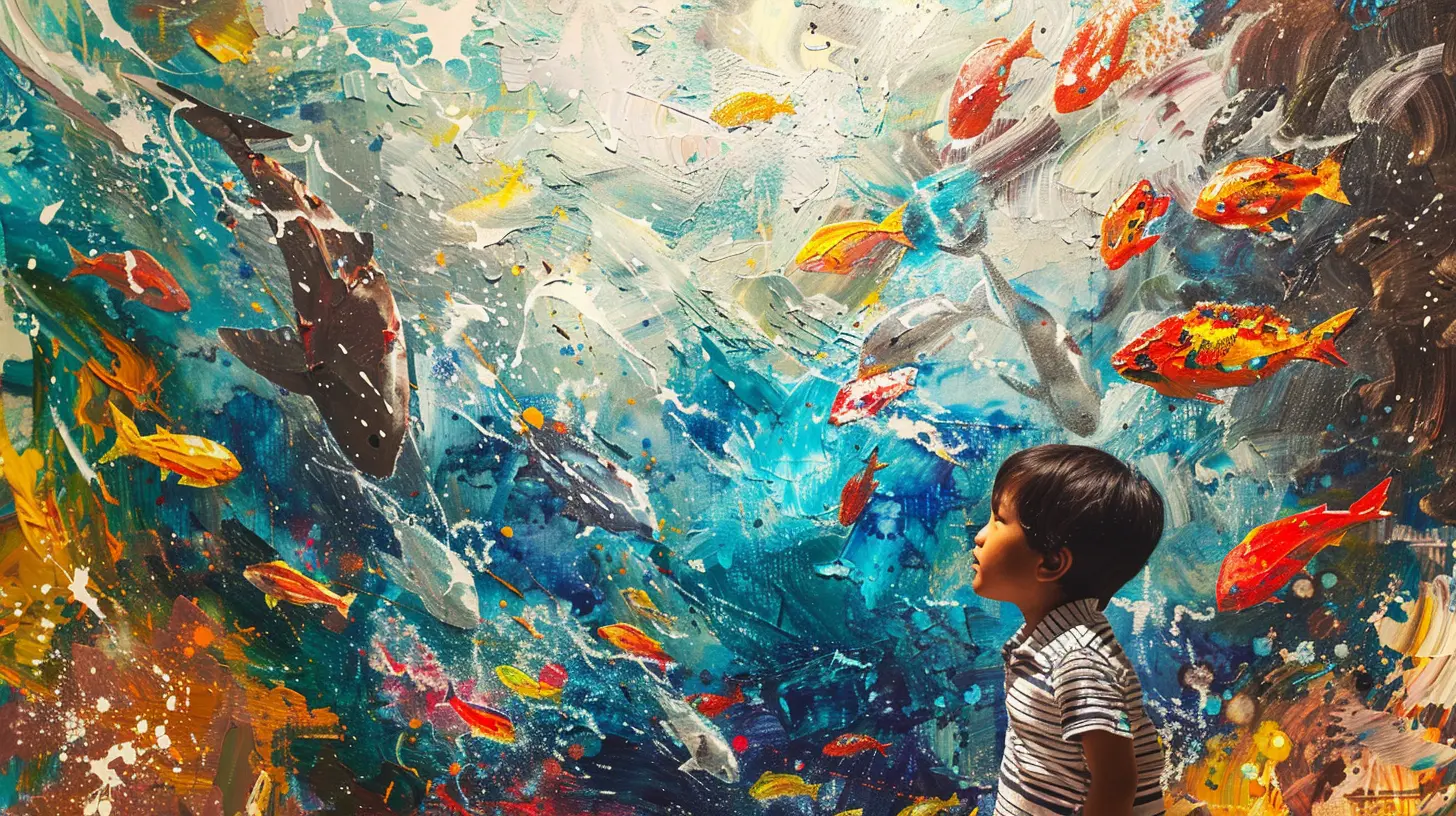
Creating an Environment That Inspires Creativity
Just like plants need the right conditions to grow, kids need the right environment to flourish artistically.A Space to Create
Kids don’t need a fancy art studio—a corner of the kitchen table will do. What matters is that they have a dedicated space where they’re free to create without worrying about mess or making mistakes.Keep materials accessible. Put crayons, paper, and scissors where they can reach them. Creativity often strikes when no one’s watching.
The Freedom to Explore
Sometimes, kids just need permission to make a mess. Finger paint, glue, glitter—it’s all part of the process. Don’t worry about the final product. The goal isn’t perfection; it’s exploration.Avoid giving step-by-step instructions all the time. Instead, say something like, “Show me what you can do with these colors!"
Celebrate the Process, Not Just the Product
It’s tempting to say, “That’s beautiful!” every time your child hands you a drawing. And while that’s lovely, try focusing on the effort too. Say things like:- “I love how much time you spent on those tiny details.”
- “What made you choose those colors?”
By valuing the process, you encourage them to keep trying, experimenting, and learning.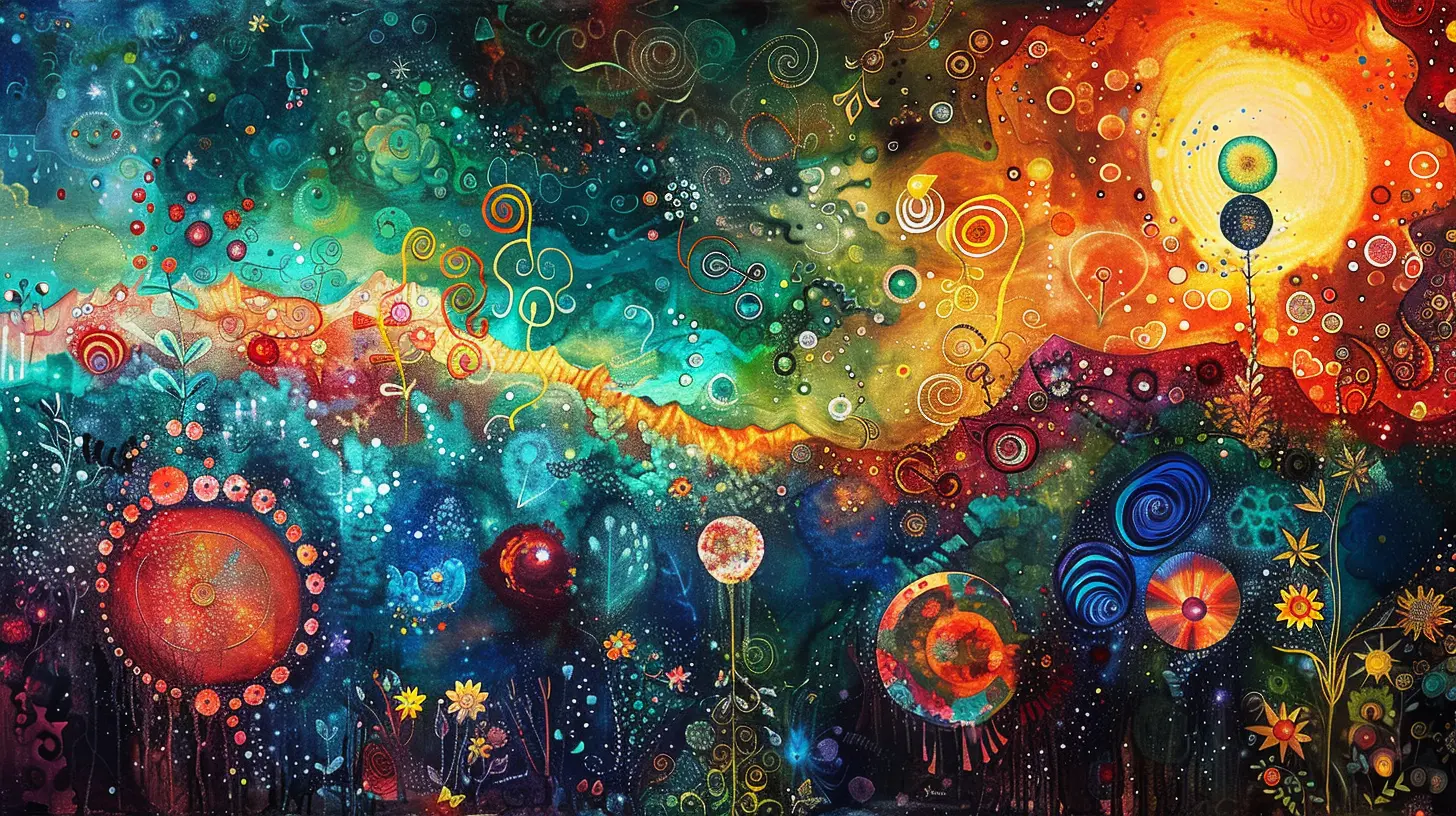
Tools and Materials That Spark Joy and Creativity
You don’t need to break the bank to build a fun art toolkit. It’s less about what you have and more about how it’s used.Here are some staples you might consider:
- Crayons and Markers: Classics for a reason.
- Watercolor Paints: Great for experimenting with blending and layering.
- Chalk and Sidewalks: Art + fresh air = win-win.
- Modeling Clay: Helps build hand strength and 3D thinking.
- Stamps and Stickers: For decoration and storytelling.
- Recycled Materials: Egg cartons, cardboard, old magazines—they’re like treasure for little artists.
Rotate materials every few weeks to keep things fresh and exciting.
How to Encourage Without Controlling
As adults, we sometimes forget that encouragement doesn’t mean directing. It’s easy to slip into phrases like “Why don’t you draw a tree here?” or “That should be blue, right?”But when we do that, we’re turning their art into our vision, not theirs.
Instead, try:
- “What do you want to add next?”
- “How does this part make you feel?”
- “If your drawing could talk, what would it say?”
These kinds of open-ended questions invite deeper thinking and personal connection to their work.
When to Introduce Formal Art Instruction
Some kids will naturally want to learn how to draw more realistically or try new techniques. That’s when art classes can be a fantastic addition.But timing is everything.
If your child is still in that joyful, messy, abstract phase, there’s no need to rush into structure. Let them lead. When they start asking things like, “How do I draw a cat that looks real?” then it’s time to explore formal instruction.
Look for classes that:
- Emphasize creativity over copying.
- Are taught by teachers who value expression—not just technical skill.
- Include exposure to different mediums and artists.
Using Art to Build Connection
Art can be more than an individual pursuit—it can be a shared experience. Create with your child. Sit down next to them and draw your own picture. You’ll not only be modeling creativity, but also showing that art has no age limit.Try collaborative projects:
- A family mural on a big piece of paper.
- Decorating a birdhouse together.
- Making greeting cards to send to relatives.
These shared moments build memories and strengthen relationships.
What If Your Child Loses Interest?
It happens. That child who once painted every day might suddenly say, “I don’t feel like drawing anymore.” Don’t panic.Kids go through phases. Think of creativity like a tide—it ebbs and flows.
Instead of pushing them to return to art, offer it gently. Leave materials out, suggest a fun project, or try combining art with something else they love (e.g., “Want to draw a map for the video game you’re playing?”).
Most of the time, they’ll come back to it when they’re ready.
Art is About More Than Art
Supporting artistic growth in kids isn’t about raising the next Picasso. It’s about giving them space to imagine. To feel. To grow.So the next time you’re handed a wrinkled paper with purple blobs and green scribbles, don’t just say “nice drawing.” Say, “Thanks for sharing this with me. Tell me all about it.”
Because that one small moment might just be the beginning of a lifelong love of creativity.
Final Thoughts
From scribbling toddlers to thoughtful young artists, every child has the potential to create something beautiful. Our role as caregivers, educators, and parents is to provide that steady support—cheering them on, handing them the paintbrush, and letting them make their own kind of magic.Remember, even the most celebrated artists started with a crayon and a blank page.
all images in this post were generated using AI tools
Category:
Art EducationAuthor:

Olivia Chapman
Discussion
rate this article
2 comments
Zayn Henson
What a delightful read! Inspiring kids to evolve from scribbles to masterpieces is such a beautiful journey. Encouraging creativity truly nurtures their unique talents!
October 25, 2025 at 4:14 AM

Olivia Chapman
Thank you so much! I’m glad you found it inspiring—nurturing creativity in kids truly can lead to incredible growth!
Zariah Jenkins
What a wonderful read! It's inspiring to see how nurturing creativity in kids can transform their scribbles into amazing masterpieces. Let's keep encouraging their artistic journeys!
June 30, 2025 at 10:32 AM

Olivia Chapman
Thank you for your kind words! I'm glad you found the article inspiring. Let's continue to nurture our children's creativity together!
